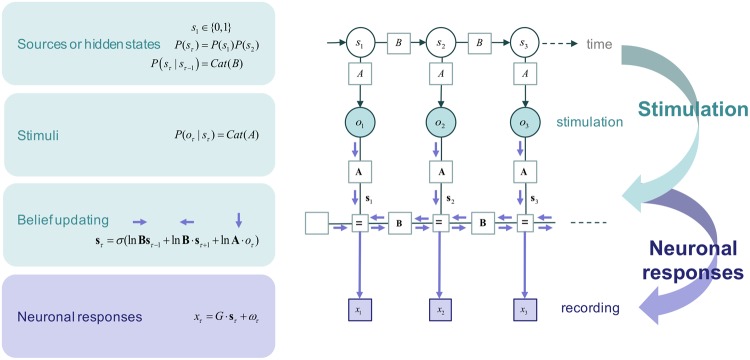Figure 2.
This figure illustrates the variational message passing we used to simulate idealised neuronal responses. This sort of scheme optimises sufficient statistics that encode posterior beliefs about the hidden causes of sensory data. The upper part of this figure uses a graphical model to illustrate how stimuli are generated, while the lower parts of this figure illustrates variational message passing within a neural network — using a Forney factor graph description60,61 based upon the formulation in31. In our setup, we know the hidden states generating observed stimuli — and we have empirical recordings of the sufficient statistics that encode beliefs (or expectations) about these hidden states. Please see30 for a detailed description of variational message passing — and accompanying learning32 — in this context. A more general treatment of message passing on factor graphs, as a metaphor neuronal processing, can be found in31.

